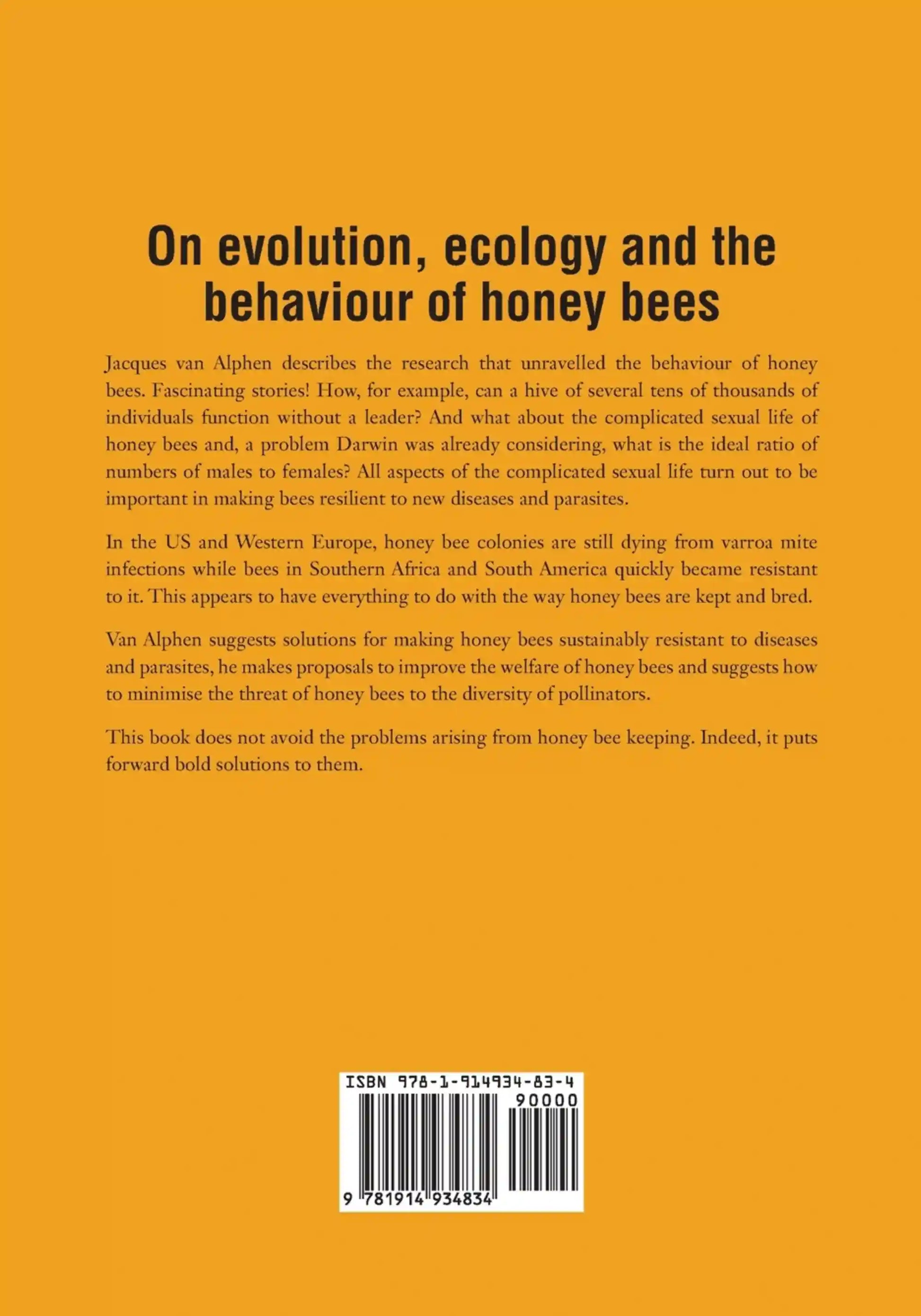Honeybees by Jacques van Alphen


Honeybees
Jacques van Alphen describes the research that unravelled the behaviour of honey bees. Fascinating stories! How, for example, can a hive of several tens of thousands of individuals function without a leader? And what about the complicated sexual life of honey bees and, a problem Darwin was already considering, what is the ideal ratio of numbers of males to females? All aspects of the complicated sexual life turn out to be important in making bees resilient to new diseases and parasites.
In the US and Western Europe, honey bee colonies are still dying from varroa mite infections while bees in Southern Africa and South America quickly became resistant to it. This appears to have everything to do with the way honey bees are kept and bred.
Van Alphen suggests solutions for making honey bees sustainably resistant to diseases and parasites, he makes proposals to improve the welfare of honey bees and suggests how to minimise the threat of honey bees to the diversity of pollinators.
This book does not avoid the problems arising from honey bee keeping. Indeed, it puts forward bold solutions to them.
VIEW Contents
- Introduction: Why this book?
- From the Palaeogene to the last Ice Age
- From the Palaeogene to the last Ice Age
- The division of labour within a hive
- Apeople without leaders
- The queen chooses the sex of her children
- Dating, where and when the partners meet
- Why does aqueen mate with somany males?
- The paradox of the old queen's departure
- The arms race
- Why so many drones and so few queens?
- The language of bees: shaking and trembling
- Moving to a new home, swarming honey bees
- Chosing a future home
- Honey bees in the wild
- Honey bees: indigenous, wild, domesticated or simply kept?
- Enemies from the Far East (1): the varroa mite
- The evolution of resistance through natural selection
- Varroa in South America
- Selection for varroa resistance
- Enemiesfrom the Far East (2): The Asian hornet
- Self-medication in honey bees
- Black bees and racism
- The honey bee as a competitor to solitary bees
- Conservatories
- Darwinian beekeeping
- Finally
VIEW Book Review
Reviewed by Ann Chilcott (Scottish Expert Beemaster) and author of THE BEELISTENER
Evolutionary biologist and Emeritus Professor Jacques van Alphen wrote Honeybees, a natural and a less natural history primarily to help non-biologist understand the complicated nature of the social behaviour of honey bees. In particular, he hopes that beekeepers might have a better understanding of how unmanaged honey bees thrive in in the wild, and be better informed and enabled to improve their management practices in ways that are “healthier and more respectful of bees”. van Alphen’s study area has been varroa and the fight against it, and he is mindful that, although our knowledge of bee behaviour, ecology, genetics and evolution has vastly increased due to scientific endeavour, not much has really changed in the beekeeping world to reflect this. At least, not in many countries including the UK. He showcases South Africa as a country that has dealt with varroa in such a way that it is not a problem, and they have never used chemical treatments.
There are 26 short chapters with a recommended reading list and references at the end of each which increases the value of this work. An index is to be found at the end, and there are several illustrations and a couple of useful explanatory diagrams.
This is a fascinating read, and one learns so much from each of the essays which explain important complicated topics such as honey bee genetics, and the pitfalls of instrumental insemination and isolated mating apiaries in such an easy-to-understand lucid way. I now understand completely a topic that has puzzled me for years; why does the old queen leave in a primary swarm (in most situations)? A new queen brings new alleles to a colony that can cancel out, through evolution, pathogen adaption and increased virulence of diseases. So, a colony that is allowed to swarm is going to be healthier, and not just because of the brood break reducing varroa reproduction.
van Alphen encapsulates health, disease, and nearly every other challenge in modern beekeeping in his discussions. He tells interesting stories and explains problems in sociobiological terms weaving in some geography and social history. For example, we learn the origins of varroa and exactly how it became such a global problem. The varroa lifecycle is explained in simple terms which will resonate with beekeepers not wanting to delve too deeply into the biology of this arachnid.
The work of many other scientists such as Seeley, Spivak, Harbro, Harris, and Mondet have been drawn upon to help inform the science behind all the recommendations for beekeeping.
Topics close to many beekeeping hearts such as promoting native dark Apis mellifera mellifera honey bees, and whether beekeepers cause a threat to the biodiversity of other pollinators are discussed from an unemotive scientific perspective.
Honeybees, a natural and a less natural history achieves its goals and will be of great interest to many readers. It will be an important publication for every beekeeper wanting to progress and utilise all the available scientific research and make changes in beekeeping management based on van Alphen’s advice.
Unavailable